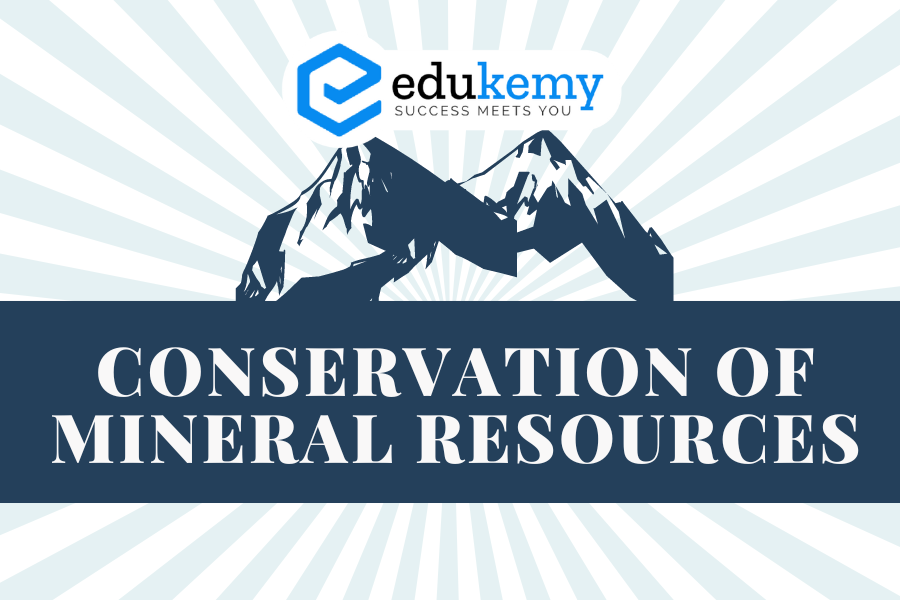


Preserving mineral resources has emerged as a pressing concern in recent times. While these resources play a vital role in fostering economic growth and development, it is imperative to acknowledge their finite and non-renewable nature.
The extraction and utilisation of these resources pose substantial environmental challenges, encompassing habitat degradation, contamination of water and air, and the release of greenhouse gases. The implementation of robust conservation strategies is paramount to achieving sustainable development and mitigating the adverse consequences associated with the utilisation of mineral resources.
Table of Contents
The role of mineral resources in economic development is indisputable, given their utilisation across various industries such as construction, transportation, energy, and electronics.
However, the finite and non-renewable nature of these resources, coupled with the substantial environmental impacts associated with their extraction and use, underscores the necessity for conservation efforts.
Firstly, the limitation of these resources highlights the potential for economic instability, resource conflicts, and geopolitical tensions upon depletion. Conserving mineral resources becomes a proactive measure to extend their availability and ensure their sustainable utilisation for future generations.
Secondly, the adverse environmental effects stemming from the extraction and use of mineral resources, including habitat destruction, water and air pollution, and greenhouse gas emissions, emphasise the need for a shift towards sustainable practices. Reducing dependence on virgin mineral resources and advocating for the reuse and recycling of existing materials can mitigate these environmental impacts and foster sustainable development.
Thirdly, mineral resource conservation yields substantial economic benefits. It not only reduces production costs but also creates employment opportunities in recycling and reprocessing industries. Moreover, it encourages innovation and the development of alternative materials, contributing to economic diversification and resilience.
In essence, the conservation of mineral resources emerges as a pivotal strategy for sustainable development, offering a pathway to minimise detrimental impacts on the environment and the economy.
Various conservation strategies can be implemented to advance the sustainable use of mineral resources. These strategies encompass:

These conservation strategies collectively contribute to the sustainable management of mineral resources, fostering a balance between economic development and environmental preservation. By promoting recycling, optimising resource use, exploring alternative materials, and minimising waste, societies can work towards a more sustainable and responsible approach to mineral resource utilisation.
Despite the various strategies and policies aimed at promoting mineral resource conservation, several challenges hinder their effective implementation. These challenges include:
Addressing these challenges necessitates a multi-faceted approach involving government regulations, industry collaboration, and advancements in technology. Overcoming economic and political interests, improving access to information, advancing sustainable technologies, investing in infrastructure, and combating illegal practices are critical steps toward effective mineral resource conservation.
Answer: Mineral resources are crucial for economic development, but they are finite and non-renewable. Conservation ensures sustainable use, preventing economic instability, resource conflicts, and environmental degradation.
Answer: Mineral resources are utilised in construction, transportation, energy, and electronics industries, playing a vital role in economic growth and development.
Answer: Extraction leads to habitat degradation, water and air pollution, and greenhouse gas emissions, impacting ecosystems. Conservation aims to mitigate these environmental consequences.
Answer: Conservation reduces production costs, creates jobs in recycling industries, fosters innovation in alternative materials, and contributes to economic diversification and resilience.
Answer: Conservation strategies include recycling and reusing mineral resources, efficient resource use, development of alternative materials, and reducing waste in mining and production processes.
Answer: Individuals can promote recycling, reduce consumption, support sustainable products, and stay informed about conservation practices.
Answer: Challenges include economic and political interests prioritising short-term gains, lack of information transparency, technological limitations, infrastructure demands, and illegal mining activities.
For UPSC Prelims Resources, Click here
For Daily Updates and Study Material:
Join our Telegram Channel – Edukemy for IAS